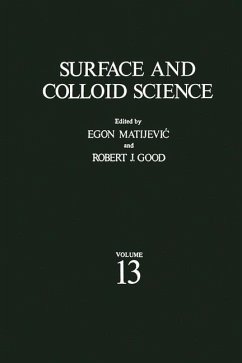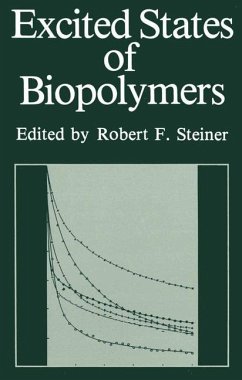1. Electrochemistry of Oil-Water Interfaces.- 1. Potential Difference at Oil-Water Interfaces.- 1.1. Equilibrium.- 1.2. Nernst Potential.- 1.3. Surface and Interfacial Potential.- 1.4. Diffusion Potential.- 2. Electrocapillarity.- 2.1. Thermodynamics of Electrocapillarity.- 2.2. Electrocapillarity at Oil-Water Interfaces.- 2.3. Adsorption at Oil-Water Interfaces.- 2.3.1. Poisson¿s Equation.- 2.3.2. Conservation of Energy.- 2.3.3. Adsorption Isotherm.- 2.3.4. Calculation of Adsorption.- 2.4. Mechanism of the Decrease in Interfacial Tension by Applying Potential.- 3. Binding at Oil-Water Interfaces.- 3.1. Counterion Binding.- 3.2. Hydrogen Ion Binding.- 3.3. Competing Binding.- 3.4. Stern Effect.- 3.5. Mixed Adsorption.- 4. Electrocapillary Emulsification.- 4.1. General Principles.- 4.2. Condition of Emulsification.- 4.3. Stability and Droplet Size Distribution.- 4.4. Mechanism of Electrocapillary Emulsification.- 5. Coalescence of Droplets.- 5.1. DLVO Theory and Coalescence of Mercury Droplets.- 5.2. Coalescence of Aqueous Drops in Oil Phase.- 5.3. Bridge Formation between Water Droplets.- 5.4. Protection by Organic Materials.- 6. Potential Distribution of Membrane Systems.- 6.1. Donnan Membrane Potential.- 6.2. Bi-Ionic Potential.- 6.3. Membrane Potential Difference.- Abbreviations.- Notation.- References.- 2. Kinetic Theory of Flotation of Small Particles.- 1. Specific Features of the Mechanism Involving Fixation of Small Particles on the Surface of a Bubble.- 2. Specific Features of the Mechanism of Transfer of Small Particles to the Bubble Surface.- 3. Quantitative Theory of Flotation of Small and Medium-Sized Spherical Particles.- 4. Quantitative Experimental Research into Flotation of Small Particles.- 5. Detachment of Small Particles in Contactless Flotation and the Dynamic Adsorption Layer of a Bubble.- 6. Nonequilibrium Surface Forces in Flotation.- 7. Collision Efficiency and Flotation Kinetics.- 8. Influence of Aggregation of the Particles on the Elementary Act of Inertia-free Flotation.- 9. Flotation of Submicron Particles.- 10. Conclusions.- Notation.- References.- 3. Specifically Impermeable Precipitate Membranes.- 1. Introduction.- 2. The Hirsch Effect.- 2.1. Membrane Potential.- 2.2. Conditions for Specific Impermeability.- 2.3. ¿Conditioning¿ of BaSO4 Membranes.- 2.4. Generation of Galvanic Currents and Other Electrical Properties.- 2.5. Precipitate Membranes as Electrodes.- 2.6. ¿Deconditioning¿ of BaSO4 Membranes.- 2.7. Other Ionic Precipitate Membranes.- 2.8. Mechanism of Specific Impermeability.- 3. Precipitate Formation by Double Diffusion in Gels.- 3.1. Antigens and Antibodies.- 3.2. Antigen-Antibody Precipitates Formed by Double Diffusion in Gels.- 3.3. Other Double-Diffusion Precipitate Systems.- 4. Place of First Formation of Precipitate Lines in Double Diffusion in Gels.- 4.1. Complex-forming and Non-Complex-forming Substances.- 4.2. Place of First Precipitation of Complex-forming Systems.- 4.3. Determination of Diffusion Coefficients of Complex-forming Biopolymers by Double Diffusion at Right Angles in Gels.- 4.4. Shape of the Precipitate Lines of First Formation of Complex-forming Systems.- 4.5. Place of First Precipitation of Non-Complex-forming Systems.- 5. Evolution of Precipitate Lines in Double Diffusion as a Function of Reagent Concentration and Time.- 5.1. Decay of Precipitate Lines of Complex-forming Systems at Excess of One of the Reagents.- 5.2. Titration by Double-Diffusion Precipitation.- 6. Nondiffusion Methods for Generating Precipitate Lines.- 6.1. Other Methods for Inducing Reagents to Meet and Interact.- 6.2. Counterelectrophoresis.- 6.3. Rheophoresis.- 7. Single-Diffusion Precipitation.- 7.1. Monodimensional Single-Diffusion Precipitation.- 7.2. Bidimensional Single-Diffusion Precipitation.- 7.3. Precipitation Induced by Electrophoresis of One Reagent into a Gel Imbibed with the Other Reagent.- 8. Liesegang Phenomenon.- 8.1. Earlier Theories.- 8.2. Implications of Specific Impermeability of Precipitates.- 9. Biological Precipitate Membranes.- 9.1. Membranes Specifically Impermeable to Given Ions.- 9.2. Other Properties of Precipitates of Biological Materials.- References.- 4. Dynamic Surface Tension and Capillary Waves.- 1. Introduction: Surface Constitutive Equations.- 2. General Theoretical Discussion.- 3. General Remarks on Ripple Methods for the Study of Dynamic Surface Tension.- 4. Interfacial Wave Methods.- 4.1. Theory of the Method.- 4.2. Working Equations.- 4.3. Numerical Analysis of the Working Equations.- 4.4. Instrumentation and Procedures.- 4.5. Analysis of the Ripple Motion.- 4.6. Modes of Data Collection.- 5. The Spectroscopy of Ripples.- 5.1. Dispersion Relations.- 5.2. Numerical Analysis of Dispersion Functions.- 5.3. Error Analysis of Dispersion Equations.- 5.4. Instrumentation.- 5.5. Vibration Control.- 6. Appendix: Reduction of the Determinant Given by Hansen et al..- References.- 5. Digital-Computer-Oriented Numerical Analysis in Surface Chemistry.- 1. Introduction.- 2. Nonlinear Least-Squares Analysis.- 3. Analysis of Model Stability to Small Errors: Prediction Analysis.- 3.1. The One-Independent-Variable Special Case.- 3.2. The Many-Variable, Many-Parameter Linear Case.- 4. Methods.- 4.1. Minimization of Least-Squares Risk Function.- 4.2. Numerical Analysis of Models.- 5. Appendix.- References.- 6. Advances in Experimental Techniques for Mercury Intrusion Porosimetry.- 1. Introduction.- 2. Mercury Intrusion Instruments.- 3. Sample Selection and Preparation.- 4. Low-Pressure Intrusion Measurements.- 5. High-Pressure Intrusion Measurements.- 6. Rate of Pressurization.- 7. Presentation of Intrusion Results.- 8. Microcomputers and Porosimeters.- 9. Testing Particulate Materials.- 10. Other Useful Information Available from an Intrusion Experiment.- 11. Closing Statement.- References.- 7. The Contact Angle of Mercury on the Internal Surfaces of Porous Bodies: A Footnote to D. N. Winslow¿s Review of Porosimetry.- 1. Introduction.- References.- Author Index.








